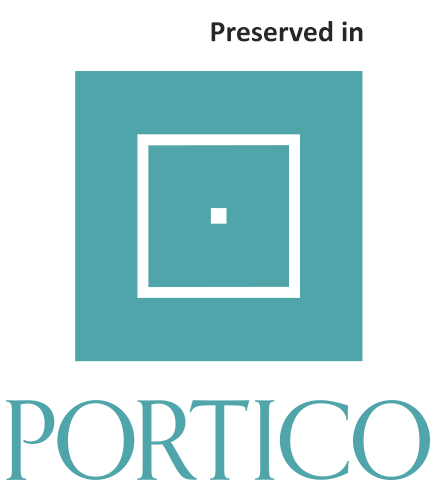Preparation of Dental Varnish using Nanosilver-chitosan Composite and its Antibacterial Activity Against Streptococcus mutans and Lactobacillus spp.
J. Environ. Nanotechnol., Volume 14, No 1 (2025) pp. 69-75
Abstract
Dental caries, caused by Streptococcus mutans and Lactobacillus spp., are a major oral health issue. Nanosilver-chitosan composite varnishes offer antibacterial protection, inhibit biofilm formation, and support enamel remineralization, making them a promising solution for managing dental decay. Orange and grape peel extracts were combined with chitosan and silver nitrate to synthesize chitosan-silver nanoparticles (CS-AgNPs). Antimicrobial activity was evaluated using agar well diffusion and time-kill assays. Data were analyzed via one-way ANOVA. The varnish demonstrated dose-dependent antibacterial activity, with increasing inhibition zones for higher concentrations and consistent reductions in bacterial growth. Time-kill assays revealed significantly lower optical density at 25 µg/mL, 50 µg/mL, and 100 µg/mL compared to the control, indicating effective bacterial inhibition. The efficacy of this dental varnish was comparable to a standard antibacterial agent. Strong activity was observed against Lactobacillus spp. Statistical analysis confirmed significant differences among the groups (p < 0.05). These findings highlight the potential of nanosilver-chitosan varnish as an advanced preventive material for dental caries. Further research on its long-term safety and efficacy could facilitate its integration into routine dental care practices.
Full Text
Reference
Alam, M. K., Srivastava, K. C., Khamis, M. F. and Husein, A., Recent advancements in the dental biomaterials applied in various diagnostic, restorative, regenerative, and therapeutic procedures, Front. Bioeng. Biotechnol., 10, 1116208 (2023).
https://doi.org/10.3389/fbioe.2022.1116208
Alsharbaty, M. H. M., Naji, G. A., Ghani, B. A., Schagerl, M., Khalil, M. A. and Ali, S. S., Cytotoxicity and antibacterial susceptibility assessment of a newly developed pectin–chitosan polyelectrolyte composite for dental implants, Sci. Rep., 14(1), 16968(2024).
https://doi.org/10.1038/s41598-024-68020-7
Baik, A., Alamoudi, N., El-Housseiny, A. and Altuwirqi, A., Fluoride Varnishes for Preventing Occlusal Dental Caries: A Review, Dent. J., 9(6), 64(2021).
https://doi.org/10.3390/dj9060064
Bruna, T., Maldonado-Bravo, F., Jara, P. and Caro, N., Silver Nanoparticles and Their Antibacterial Applications, Int. J. Mol. Sci., 22(13), 7202(2021).
https://doi.org/10.3390/ijms22137202
Cai, J., Burrow, M. F., Manton, D. J., Hardiman, R. and Palamara, J. E. A., Remineralising effects of fluoride varnishes containing calcium phosphate on artificial root caries lesions with adjunctive application of proanthocyanidin, Dent. Mater., 37(1), 143–157(2021).
https://doi.org/10.1016/j.dental.2020.10.021
Chokkattu, J. J., Mary, D. J., Shanmugam, R. and Neeharika, S., Evaluation of Clove and Ginger-mediated Titanium Oxide Nanoparticles-based Dental Varnish against Streptococcus mutans and Lactobacillus Species: An In Vitro Study, J. Contemp. Dent., 14(3), 233–237(2023).
https://doi.org/10.5005/jp-journals-10015-2185
Farasati, F. B., Naimi-Jamal, M. R., Jahanbakhshi, M., Hadizadeh, A., Dehghan, S. and Hadizadeh, S., Enhanced antibacterial activity of porous chitosan-based hydrogels crosslinked with gelatin and metal ions, Sci. Rep., 14(1), 7505(2024).
https://doi.org/10.1038/s41598-024-58174-9
Ganesh, P. S., Kiruthigha, T., Pathoor, N. N. and Veeraragavan, G. R. Exploring the Antimicrobial and Antibiofilm Activities of Luffa cylindrica against Pseudomonas aeruginosa and Enterococcus faecalis, TIJPH, 12(3), xx-xx(2024).
https://doi.org/10.21522/TIJPH.2013.12.03.Art065
Girija, A. S. S. and Ganesh, P. S., Functional biomes beyond the bacteriome in the oral ecosystem, Jpn. Dent. Sci. Rev., 58, 217–226(2022).
https://doi.org/10.1016/j.jdsr.2022.05.002
Harini, B., Rajeshkumar, S. and Roy, A., Biomedical Application of Chitosan and Piper Longum-assisted Nano Zinc Oxide–based Dental Varnish, Appl. Biochem Biotechnol., 194(3), 1303–1309(2022).
https://doi.org/10.1007/s12010-021-03712-8
Harugade, A., Sherje, A. P. and Pethe, A., Chitosan: A review on properties, biological activities and recent progress in biomedical applications, React. Funct. Polym., 191, 105634(2023).
https://doi.org/10.1016/j.reactfunctpolym.2023.105634
Kishore, O. G. S., Priyadharshini, R., & Rajeshkumar, S. Anti-inflammatory and antimicrobial activity of silver nanoparticles synthesized using Piper longum, JRMDS., 9(10), 70–76(2021).
Maheshwaran, B., Priyadharshini, R., Kumar, S. R. and Sinduja, P., Antimicrobial Activity and Cytotoxicity of Mouthwash Prepared from Azadirachta indica and Stevia rebaudiana Extract– An In vitro Study, JPRI, 33(59), 96–107(2021).
https://doi.org/10.9734/jpri/2021/v33i59B34357
Mascarenhas, R., Hegde, S. and Manaktala, N., Chitosan nanoparticle applications in dentistry: A sustainable biopolymer, Front. Chem., 12, 1362482 (2024).
https://doi.org/10.3389/fchem.2024.1362482
Shree, A. N., Pillai, D. and Rajeshkumar, S., Comparison of Silver, Zinc Oxide, and Chitosan-mediated Nanoparticle synthesis and their antifungal activity against Oral Candidiasis, Int. J. Mater. Sci. Technol., 10(4), 2295–2302(2023).
https://doi.org/10.15379/ijmst.v10i4.2411
Parvekar, P., Palaskar, J., Metgud, S., Maria, R. and Dutta, S., The minimum inhibitory concentration (MIC) and minimum bactericidal concentration (MBC) of silver nanoparticles against Staphylococcus aureus, Biomater. Invest. Dent., 7(1), 105–109(2020).
https://doi.org/10.1080/26415275.2020.1796674
Qu, S., Ma, X., Yu, S. and Wang, R., Chitosan as a biomaterial for the prevention and treatment of dental caries: antibacterial effect, biomimetic mineralization, and drug delivery, Front. Bioeng. Biotechnol., 11, 1234758(2023).
https://doi.org/10.3389/fbioe.2023.1234758
Rajeshkumar, S., Santhoshkumar, J., Parameswari, R. P., Saravanan, S., Balusamy, S. R. and Arunachalam, K., Degradation of Toxic Dye and Antimicrobial and Free Radical Potential of Environmental Benign Zinc Oxide Nanoparticles, Bioinorg. Chem. Appl., 2022(1), 4513208(2022).
https://doi.org/10.1155/2022/4513208
Zaki, A. H., Saleh, G. H. S., Hamed, M. M., Galal, S. M., Almehmadi, A. M., Almuraee, A. A., Alqurashi, A. F. and Yassien, E. E., The synergistic potential of orange peel extract: A comprehensive investigation into its phenolic composition, antioxidant, antimicrobial, and functional fortification properties in yogurt, Food Chem. X., 22, 101458(2024).
